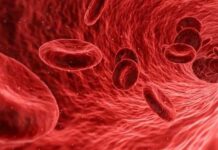A one-two punch envisioned by many as a way to improve treatment for some blood cancers may be more challenging to implement than previously expected, according to researchers at Stanford Medicine.
The treatment, known as CAR-T cell therapy, uses a patient’s own genetically engineered immune cells to seek out and attack cancer based on the expression of a molecule called CD19 on the cancer cells’ surface. It’s been approved by the Food and Drug Administration for several types of blood cancers. Although the treatment is often initially successful, more than half of patients eventually relapse.
The researchers studied whether simultaneously targeting two molecules, CD19 and CD22, would make it more difficult for cancer cells to evade the treatment. But they found it was difficult to engineer CAR-T cells that were equally potent against each target.
“This is the importance of doing a careful clinical trial,” said Crystal Mackall, MD, the Ernest and Amelia Gallo Family Professor and a professor of pediatrics and medicine. “In some ways, we’re back to the drawing board. But we’ve learned a lot about how to overcome these challenges and about which patients are most likely to benefit from CAR-T cell treatment.”
In particular, the researchers showed a correlation between the density of the target molecules on the cell surface and the likelihood that a patient will respond well to CAR-T cell therapy. They also devised a way to assess the function of engineered CAR-T cells before they are used in patients.
“Until now, it’s not been possible to predict whose disease will progress and whose won’t,” said David Miklos, MD, PhD, professor of medicine and chief of bone marrow transplantation and cellular therapy. “This is a big clinical step.”
Mackall and Miklos are co-senior authors of the study, which was published online in Nature Medicine. Hematology fellow Jay Spiegel, MD; Shabnum Patel, PhD, associate director of process development and manufacturing at Stanford’s Center for Cancer Cell Therapy; and Lori Muffly, MD, assistant professor of medicine, are lead authors.



























